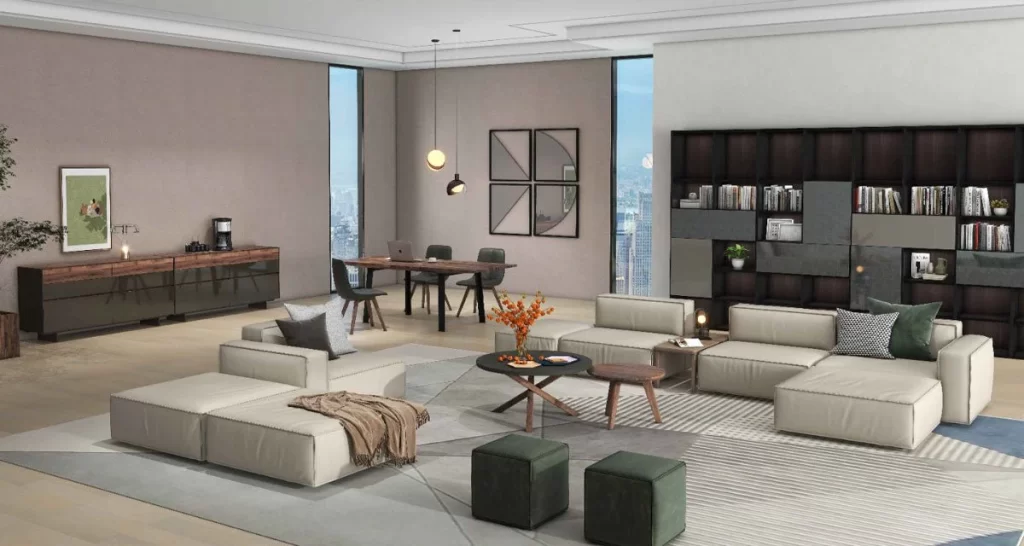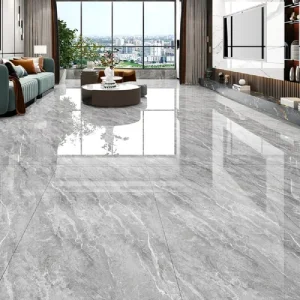
Without furniture, mood dictates the atmosphere and usability of a space. With it, things become more complicated. Furniture can’t be avoided: put well, it is an essential part of our relaxation. Put badly, it can only add to our anxiety.
If lines of different shapes and colour evoke different feelings, and if the material from which the image is made can affect us by altering our perceptual engagement in ways that are conventional or habitual, then cultural associations and symbolic meanings can all add nuance to the emotional power of the work.
Colors
Greens, in particular, are also associated with rest and recovery. A hospital conducive to human-to-human connection should harness the power of colour alone, as environments that feature red or orange – colours that are linked to positive emotions – can increase energy levels, while the cooler tones of blue or green can help calm a frayed nerve down.
The design and style of furniture influences our moods and behaviours too, for example minimalist and modern styles provide a sense of order and organisation which often helps to reduce stress and anxiety, whereas traditional and vintage pieces create an ambience that individuals may want to sink into and feel comforted by.
Color psychology can be used as a tool in a variety of ways, from branding and marketing, to the creation of optimised work, school and living spaces. It’s even used in chromotherapy – a sophisticated form of psychotherapy.
Light
Understanding the psychology behind the furniture is important to the work of luxury designers, allowing pieces to connect with people experientially while also designing spaces that create feelings of wellness, comfort, status and exclusivity.
A modern minimalist sofa might relax (‘calm’) and order, or an ornate traditional piece might make you nostalgic (‘comfort’). This effect is known as priming; you’ve subliminally been influenced by seeing a certain type of image, reading a certain type of word, smelling a certain type of smell, doing a certain type of task, etc.
Function is also important: a desk that suits the physical needs of our bodies can focus and help us work, whereas one that is messy can make us anxious or distract us from important matters.
Purpose
It is impossible to overstate the powerful psychological effect furniture has on our emotions and behaviour, creating a sense of familiarity, status and even exclusion. Understanding how its mechanism operates will allow designers to create indoor/outdoor environments that are more meaningful and functional.
Certain types of furniture are suitable for creating an atmosphere that is relaxed (comfortable and functional furniture) or productive (functional and at the same time attractive and aesthetic furniture), but there will be others that, because they are disorganised or uncomfortable, provoke stress and anxiety.
Even the design of furniture can profoundly affect our emotions. Blues and greens, on the whole, appear cooler and induce tranquility, while reds are more fiery and add energy to a space. Warmth can also be conveyed by texture – think about how soft, cuddly materials such as fur and natural wood add a sense of homeyness, while harder materials such as glass and metal convey an elegant sophistication, or a sense of contemporary modernism.
Style
As an example, the mood of a room is an important factor in choosing furniture for one’s home. While a sofa that conforms to ergonomic principles will look good if put in your home, it will probably look even better if you also pay attention to how the whole room looks and feels with the other furniture pieces and accessories. The chances of the sofa being emotionally satisfying will be greater if it has been conceptualised and designed with the aid of psychological guidelines.
In addition to how we use furniture, colour contributes significantly to how we perceive our furniture: warm tones stimulate and promise passion, cooler tones promise relaxation. Texture matters too, as soft materials are inviting whereas hard materials feel sophisticated.
These psychological principles (called the Endowment Effect, Scarcity and Priming) can transform the otherwise boring and stressful experience of buying furniture into a more positive and pleasant journey – for all of us. Moreover, designers can exploit them to create pieces tailored to individual tastes and requirements.
Arrangement
Furniture arrangement influences the rhythm and mood of a room – it can invite us to unwind, relax and mingle, while unorganised and overcrowded spaces leave us feeling stressed and anxious.
Furniture layouts can elicit a huge spike in the amount of dopamine released by the brain because of what is called the endowment effect: when people are presented with high-quality, unique furniture pieces to choose from, the dopamine begins to race in their brains just looking through all of the options – which explains why luxury furniture is so appealing.
And as different people have different emotional responses to the furnishing, understanding this can enable the designer to create personalised pieces, unavailable anywhere else to satisfy those personal preferences and needs. This can be achieved only after carefully weighing up the use of colour, texture, purpose and arrangement.




